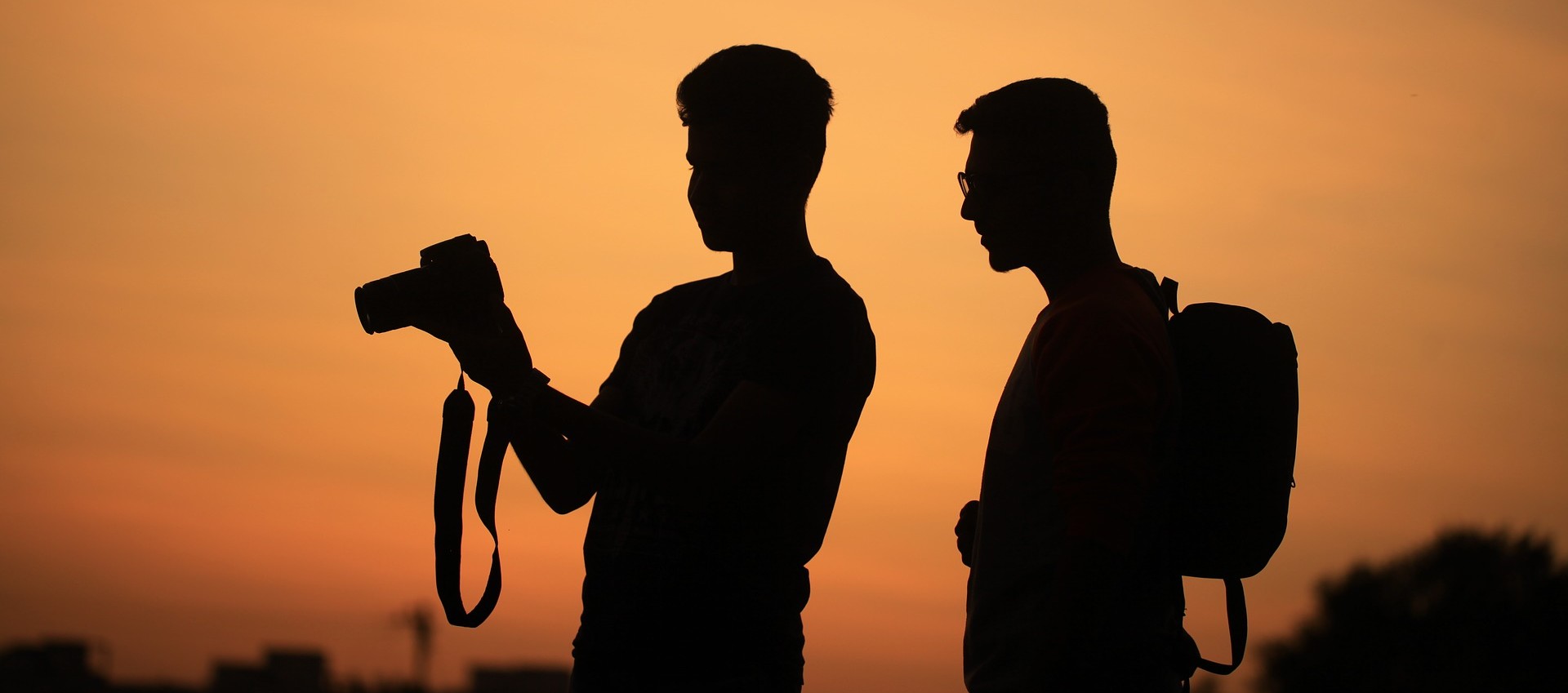Sign up for The Media Today, CJR’s daily newsletter.
Photojournalists, beware: The US Department of Homeland Security has its eyes on you. The agency tweeted Monday:
Know the signs! Did you know photography and surveillance could be a sign of terrorism-related suspicious activity? If you notice this, be sure to report it to local authorities. #seesay #protectyoureveryday pic.twitter.com/Xu9L6p5FcR
— Homeland Security (@DHSgov) July 9, 2018
Such expansive language is problematic under the First Amendment. “When you look at what DHS identifies as the signs [and objects] of suspicious photography—‘personnel, facilities, security features, or infrastructure’—it basically leaves squirrels as the only thing that’s safe to photograph,” says Frank LoMonte, executive director of the University of Florida’s Brechner Center for Freedom of Information. “That’s a pretty breathtakingly broad inventory.”
LoMonte says a chilling effect often occurs when police show up and question a photographer for simply making pictures, even if no arrest or charges follow. “Being forced to justify why you’re outside of a federal building with a camera is intimidating,” he says.
Related: You have a right to remain recording
A DHS spokesperson told me the tweet is part of the “If You See Something, Say Something” campaign, which is supposed to raise public awareness of terrorism indicators and the value of reporting suspicious activity to law enforcement. DHS launched the campaign in 2010, though its origins trace back to 9/11.
Campaign materials say “it’s up to law enforcement to determine whether [certain] behavior warrants investigation,” consistent with civil liberties. The DHS spokesperson told me the tweet had “nothing to do with the First Amendment” and that the department “respects and follows the rule of law.” I asked if investigative activity could be conducted based solely on a person’s exercise of the general right to take photographs in public spaces. I also asked how DHS evaluates the photography-related tips it receives.
DHS responded: “[This] is not focused on the right of photography or media filming itself, but more about what/how/when someone might be photographing or filming something. We are not asking people to file a report if they see someone taking pictures through the normal course of daily life, but rather if someone is filming secure areas or security protocols in a prolonged manner.” The statement went on to say that DHS “does not collect tips/leads submitted through” the campaign, which instead “directs citizens to report suspicious activity to state and local law enforcement.”
Notably, the First Amendment prohibits government agents from taking any action intended to dissuade a person from exercising constitutionally protected rights, and generally that includes the taking of photos in public spaces for journalistic and other purposes.
This just seems like an invitation for people who don’t like journalists to sic the cops on them.
“One of the real problems with this ongoing campaign,” says Mickey Osterreicher, the general counsel of the National Press Photographers Association, “is that by listing [photography] in a leading way as an example of suspicious activity, rather than just requesting citizens to report suspicious activities, [DHS is] planting a seed of fear and suspicion about otherwise innocuous behavior.”
It’s not the first time. Since 9/11, DHS and other government agencies have occasionally characterized photography as suspicious. In 2009, DHS Secretary Janet Napolitano said during a televised interview that people should report “when they see something unusual … for example, somebody continually taking photographs of a piece of critical infrastructure that doesn’t seem to make any sense.” The NPPA sent a letter to Napolitano to object, saying that “[p]hotography by itself should not be considered suspicious activity” and that her statement would “only add to the misunderstanding by the general public, police, and security that photography in public places is an activity that can be banned or made illegal in the name of security.”
In 2010, a TSA poster and counter card depicted a photographer as a terrorist: a person in a hooded sweatshirt pointing a camera at a jet, with the warning, “Don’t let our planes get into the wrong hands.” In a letter for the NPPA, Osterreicher asked the TSA to remove the poster and cards from airports. The agency did so, as it phased in a new terrorism-related public-awareness campaign.
That same year, DHS’s Federal Protective Service reached a settlement with the New York Civil Liberties Union requiring the FPS to educate its agents about First Amendment rights. The settlement ended a lawsuit brought by a man who was arrested after videotaping a demonstrator in front of a federal courthouse. Significantly, the information bulletin that was issued made clear that its principles applied to all federal buildings, not just courthouses, affirming “the public’s right to photograph the exterior of federal facilities” from “publicly accessible spaces such as streets, sidewalks, parks and plazas.”
The list goes on.
Returning to this week’s tweet, Osterreicher says it’s disingenuous for DHS to claim it doesn’t “collect tips/leads submitted through” the campaign and that individual reports are made to state and local law enforcement. Because of the National Network of Fusion Centers and the Joint Terrorism Task Forces, tips/leads collected by state and local authorities are shared with many federal ones, including DHS.
Beyond that, LoMonte says it’s not at all reassuring that DHS is encouraging people to call local law enforcement officers, because they are much more likely to arrest people on an insignificant misdemeanor charge, such as loitering, than federal intelligence agents are.
“I’d be real curious to see the research telling us that terrorists are prone to stand on public sidewalks conspicuously filming their intended targets ‘in a prolonged manner,’” LoMonte says. “This just seems like an invitation for people who don’t like journalists to sic the cops on them.”
ICYMI: When a journalist is arrested covering a protest, what should the news outlet do?
Has America ever needed a media defender more than now? Help us by joining CJR today.



